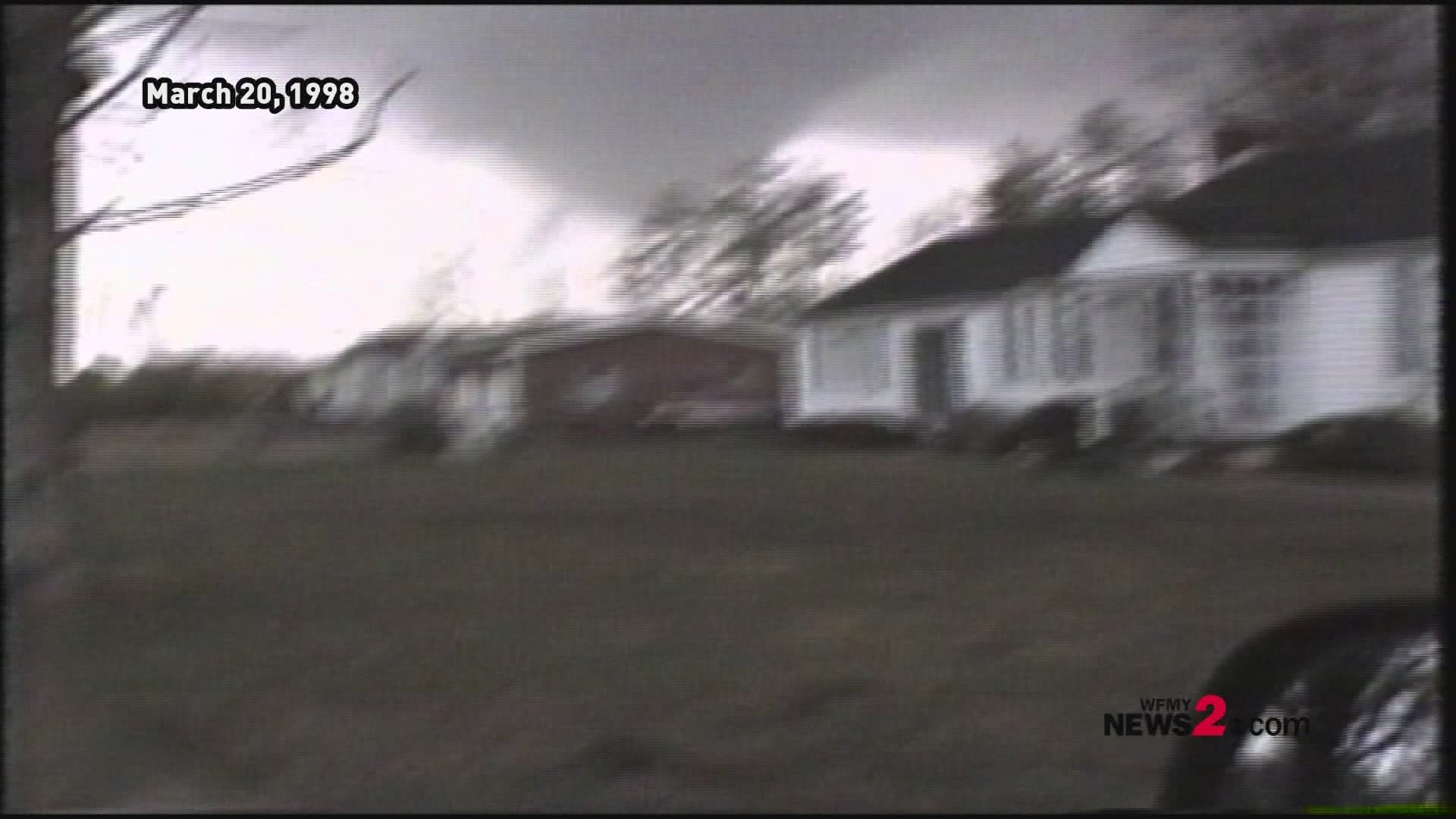HIGH POINT, N.C. -- March 28, 2018 marks eight years since an EF-3 tornado hit High Point. The tornado injured three people and damaged more than 600 structures and destroyed 40 homes.
TORNADO PATH
The EF-3 tornado had winds up to 138 MPH. The tornado was produced by the same storm system that produced tornadoes in Linwood and Sink Lake Road in Davidson County. It initially hit the area as an EF-1 tornado with winds around 100 MPH near Old Plank Road. It hit in the area of Apple Tree Academy. A small bus was rolled 50 yards to across the street. The tornado then traveled along Highway 311. It moved through along Langadle, Imperial and Impala Drives.
LISTEN TO HIGH POINT FIRE/911 DISPATCH TORNADO HELP CALLS
As the tornado crossed Old Mill Road it strengthened to an EF-2 with winds up to 130 MPH. It severely damaged homes along Brandon Drive. Three people who were sheltered in a closet of a home were thrown 50 feet and buried under the debris of the house.
The EF-2 tornado damaged homes along Old Mill Road to Skeet Club Road. The tornado then intensified to an EF-3 with winds up to 138 MPH near Hampton Park Drive. At least 50-60 homes along Hampton Park Drive, Scarlet Drive, Ruskin Drive and Johnson Road were destroyed.
Once crossing Skeet Club Road near Poplar Creek Lane, the tornado continued north finally lifting off the ground near Kendale Road just north of the lake.
TORNADO SAFETY
Spring storms are a common occurrence across the Piedmont Triad. Often times they can be severe and produce tornadoes that's why it's so important to be tornado ready.
Before a Tornado
- Be alert to changing weather conditions.
- Listen to NOAA Weather Radio or to commercial radio or television newscasts for the latest information.
- Look for approaching storms
Look for the following danger signs:
- Dark, often greenish sky
- Large hail
- A large, dark, low-lying cloud (particularly if rotating)
- Loud roar, similar to a freight train
- If you see approaching storms or any of the danger signs, be prepared to take shelter immediately.
During a Tornado:
- If you are under a tornado warning, seek shelter immediately.
- Get indoors to a pre-designated shelter area such as a basement, storm cellar or the lowest building level. If there is no basement, go to the center of an interior room on the lowest level (closet, interior hallway) away from corners, windows, doors and outside walls.
- Shutter windows and outside doors.
- If in a vehicle, trailer or mobile home, get out immediately and go to the lowest floor of a sturdy, nearby building or storm shelter.
- If unable to get indoors, lie flat in a nearby ditch or depression and cover your head with your hands. Be aware of potential flooding and flying debris.
- Never try to outrun a tornado in your vehicle. Instead, leave the vehicle immediately for safe shelter.
After a Tornado:
- Use the telephone only for emergency calls.
- Avoid downed power lines and report them to your utility company.
- Stay out of damaged buildings.
AAA offers the following tornado safety tips to motorists:
- A “tornado warning” means a twister is developing or is actually on the ground. It is more severe than a “tornado watch,” which means conditions are favorable for the development of severe thunderstorms, which may or may not spawn twisters.
- If a tornado warning is issued for your area, leave your vehicle immediately and seek shelter in a sturdy building.
- Never try to outrun a tornado. Your car or pickup will offer no protection from a twister. It is impossible to know which direction a tornado may decide to go.
- Seek shelter indoors. A basement is safest. Closets or small interior rooms are best. Stay away from south walls, west walls and all windows. Get under a solid piece of furniture or a mattress.
- If you are caught in the open with no substantial buildings available, find a ditch, ravine or low-lying area and lie flat. Stay away from roadway overpasses.
- Do not seek shelter in a mobile home. These structures, even if tied down, offer little protection from tornadoes and should be abandoned.
- Remember, wet roads mean poor traction. Conditions are most dangerous during the first ten minutes of a heavy downpour as oil and debris wash away. Driving on wet roads in the rain is like driving on ice. Slow down. Take it easy. Allow extra time to reach your destination.
- Never use your motor vehicle’s cruise control feature in rainy weather.
► Make it easy to keep up to date with more stories like this. Download the WFMY News 2 App: Apple Users, Android Users
VIDEOS | Stoneville Tornado 20 Years Later (March 1998)


